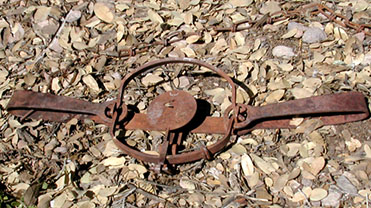In the Press: Feds release Mexican gray wolf trapping study, environmentalists concerned about findings
 SUSAN MONTOYA BRYAN Associated Press
SUSAN MONTOYA BRYAN Associated Press
ALBUQUERQUE, N.M. — The debate over whether wildlife managers are doing enough to protect Mexican gray wolves in the Southwest was rekindled Monday with the release of a long-awaited federal study that examined the effects of furbearer trapping on the endangered animals.
The U.S. Geological Survey conducted the study for the New Mexico Department of Game and Fish after former Gov. Bill Richardson issued an executive order last year banning trapping in the wolf recovery area in southwestern New Mexico.
State game commissioners recently voted to lift the ban after the game department made a recommendation based on the study’s findings that trapping accounts for only a fraction of documented wolf injuries and deaths in the recovery area, which spans parts of New Mexico and Arizona.
Environmentalists were critical of the decision to lift the trapping ban since the study had not been released to the public before Monday.
There have been 78 wolf deaths documented since the reintroduction effort began in 1998, according to the study. More than 80 percent of those were human-caused, either by illegal shooting, vehicle collisions, lethal removal by wildlife managers or trapping.
The researchers found that trapping, both by wildlife managers and others, accounted for less 4 percent of wolf fatalities.
Of 13 documented trapping incidents in New Mexico involving trappers other than those working for the wolf recovery effort, seven wolves were injured, two had leg amputations and two others died as a result of their injuries.
“The fact that two wolves died in traps was enough to make our jaws drop,” said Wendy Keefover of the group WildEarth Guardians, which had been seeking the release of the report.
Keefover said the study provides enough evidence that trapping should be banned in the wolf recovery area. WildEarth Guardians’ attorneys are weighing their options, she said.
Jim Lane, chief of the game department’s wildlife management division, said the report supports the agency’s recommendation that the ban be lifted since the impacts to wolves from regulated furbearer trapping were minor.
“The biology behind it is sound. We don’t have any data at all to support the notion that trapping has had a negative impact,” Lane said. “You’ve got cars, you’ve got illegal shootings and even the project-related mortalities were higher than trapping.”
Between 1,100 and 2,000 trapping permits are sold each year in New Mexico, but only about half of those are purchased by hunters who use traps or snares. Lane explained that anyone interested in harvesting animals that fall under the state’s furbearer regulations, whether they are using rifles or other means, must buy a trapping permit.
Those trapping licenses, along with other fees paid by hunters and anglers, are what pay for conservation and management efforts for animals across the state, Lane said.
The agency is required by state statute to manage New Mexico’s wildlife resources in a sustainable way for hunters and recreationalists.
“What it really boils down to is an emotional and social argument on whether trapping is indeed a management tool that should be allowed or not,” Lane said. “Trapping is a valuable management tool for us.”
The U.S. Geological Survey researchers reviewed annual reports and requested information on wolf trapping incidents from the U.S. Fish and Wildlife Service in evaluating the potential risk to wolves from the use of traps and snares that are allowed in New Mexico.
The agency was criticized for not releasing the report sooner, but officials said it had to undergo a scientific peer review that is required of all USGS research projects to ensure objectivity.
Ken Williams, head of the agency’s cooperative research units, called the wolf report an “open, balanced review.”
****************************************************************************************************************************************
This article was published by the Albuquerque Journal and the Columbus, Indiana Republic.
Click here to submit a letter to the editor of the Albuquerque Journal.
Click here to submit a letter to the editor of the Republic.
Trap photo courtesy of Mary Katherine Ray



